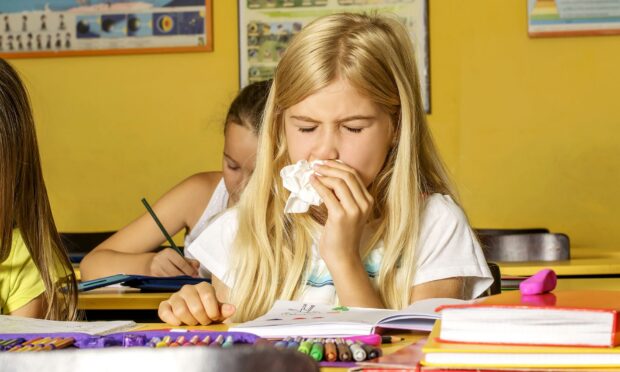New Covid rules state that only children who are feeling unwell and have a high temperature should stay home from school.
Mild symptoms like runny nose, sore throat or slight cough shouldn’t keep children home from school.
That’s the latest advice from Professor Jason Leitch, who wrote to parents on Friday.
The advice comes ahead of a weekend when national Covid-19 protocols are set to change once again.
What’s the new advice?
The new guidance marks the most recent relaxation of school Covid rules. Prof Leitch said that children can now attend school as long as they are feeling well enough.
“What this means in practice is that children and young people (those aged 18 and under) with mild symptoms such as a runny nose, sore throat, or slight cough – but who are otherwise well – do not need to stay at home and can continue to attend education settings.
“They should only stay at home if they are unwell and have a high temperature.
“They can go back to school, college or childcare, and resume normal activities when they no longer have a fever and they feel well enough to attend.”
He said that the new guidance reflects the fact that children are more likely than adults to show respiratory symptoms that aren’t connected to Covid-19.
New school Covid rules: Why now?
Covid guidelines for the general public will change this weekend. This means a relaxation of self-isolation requirements and an end to most testing and contact tracing.
“From Sunday 1 May, public health advice will change to a ‘stay at home’ message and replace self-isolation for people who have symptoms or have tested positive for Covid-19,” Prof Leitch said.
“As a result, people who have symptoms of Covid-19 and who have a fever or are too unwell to carry out normal activities will be asked to stay at home while they are unwell or have a fever.”
This change marks the latest relaxation in pandemic protocols. Last week, secondary students returned from the Easter holidays to mask-free schools.
Covid-19 related absences are at an annual low across the north and north-east, and the national absence rate was just 0.4% this week.
Read more from the Schools & Family team
How do you explain death to children – and should they go to the funeral?
CHECK: School league tables 2022
Real Life Parenting Dilemmas: Is it possible to achieve the perfect work/life balance?

Conversation